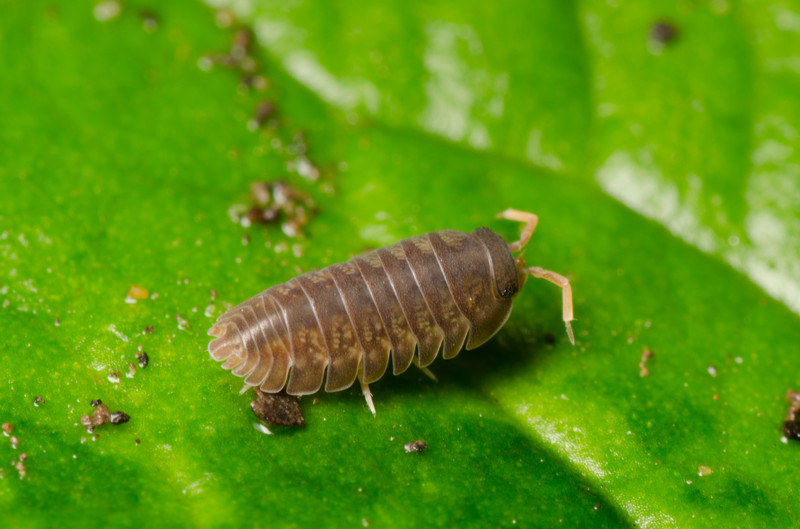Sowbugs are hard-shelled land-dwelling crustaceans. They are not insects. Sowbugs are also known as pill bugs, woodlice, and rollie pollies.
Sowbugs eat decaying plants and other organic material in the garden including decaying vegetables and fruits. Sometimes they will chew on seedlings and strawberry fruits, but generally, they do not threaten crops and are important to the process of decomposition of organic matter.
Sowbugs are found throughout the United States.
Sowbugs belong to the scientific family Armadillidae.
Good Products for Pest and Disease Control at Amazon:
- Garden Safe Snail and Slug Bait
- Bonide Sulfur Fungicide
- Monterey BT Caterpillar Killer
- Neem Bliss 100-% Cold Pressed Neem Oil
- Safer Brand Insect Killing Soap
- PyGanic Botanical Insecticide

How to identify sowbugs
Adult sowbugs are slate gray or brown ¼ to 5/8 inch long with jointed armor segments and seven pairs of tiny legs. A sowbug resembles a tiny armadillo.
Some species of sowbugs that roll up in a ball when disturbed are called pillbugs or roly polys. But not all sowbugs can do this. Generally, all sowbugs are also referred to as woodlice.
Sowbug target plants
Sowbugs feed on decaying plant material. They occasionally feed on seedlings, new roots, and the lower leaves of plants that may be laying on the ground. They feed decaying vegetables and fruits laying on the ground.
Sowbug feeding habits and damage
Sowbugs will chew decaying plant leaves and fruit. They will also chew strawberry fruits laying on moist soil. The damage sowbugs inflict is not severe. Because sowbugs eat decaying organic matter, they assist in the natural composting process. They also turn the soil and aid in soil aeration which is an aid to plant roots.
Sowbug life cycle
Sowbugs reproduce both sexually and asexually. An adult female sowbug keeps eggs on the underside of her body until they hatch. Nymphs are small and white but otherwise, look like adult sowbugs. Nymphs grow into adults by progressively shedding their shell-like exoskeleton in two stages, first the back half, then the front half. After molting, sowbugs appear purple or blue.
Sowbugs are active and feed at night. They breathe through gills and require a moist environment. During the day they hide in dark, moist places, under boards, rocks, mulch, and decaying plants.
Sowbug organic controls
There are several ways to naturally, organically control sowbugs:
- Limit excessive soil moisture in the garden to limit the number of sowbugs. Water in the morning so that plants and the soil surface can dry out by night.
- Encourage air circulation in the garden; use spun poly or plastic sheet mulch to keep crops off the ground or grow plants on stakes and trellises.
- To keep sowbugs from crops sprinkle diatomaceous earth around the base of plants and build foundations where bugs congregate.
- Trap sowbugs under stones or boards, then remove them to another location or destroy them.
- Make paper traps painted with a sticky coating such as Tanglefoot; then fold them tentlike and place them around the garden.
Related articles:
Vegetable Garden Organic Pest Control
Vegetable Garden Diseases Problem Solver
Vegetable Garden Organic Weed Control
Garden Planning Books at Amazon:
- Vegetable Garden Almanac & Planner
- Kitchen Garden Grower’s Guide Vegetable Encyclopedia
- Vegetable Garden Grower’s Guide
- Tomato Grower’s Answer Book















